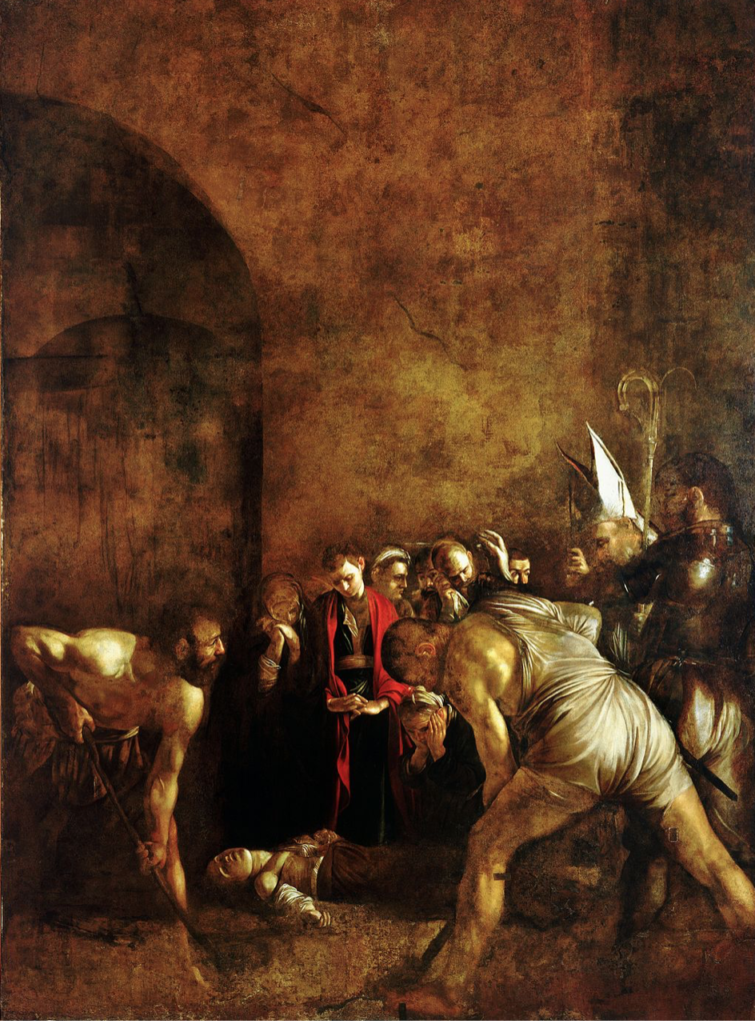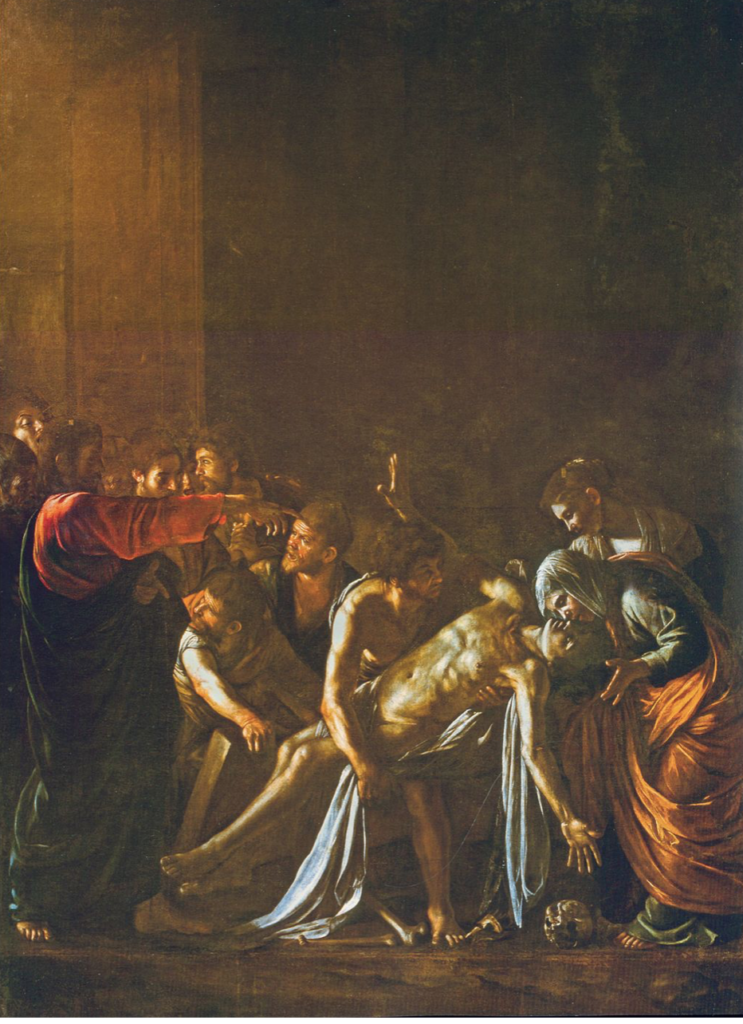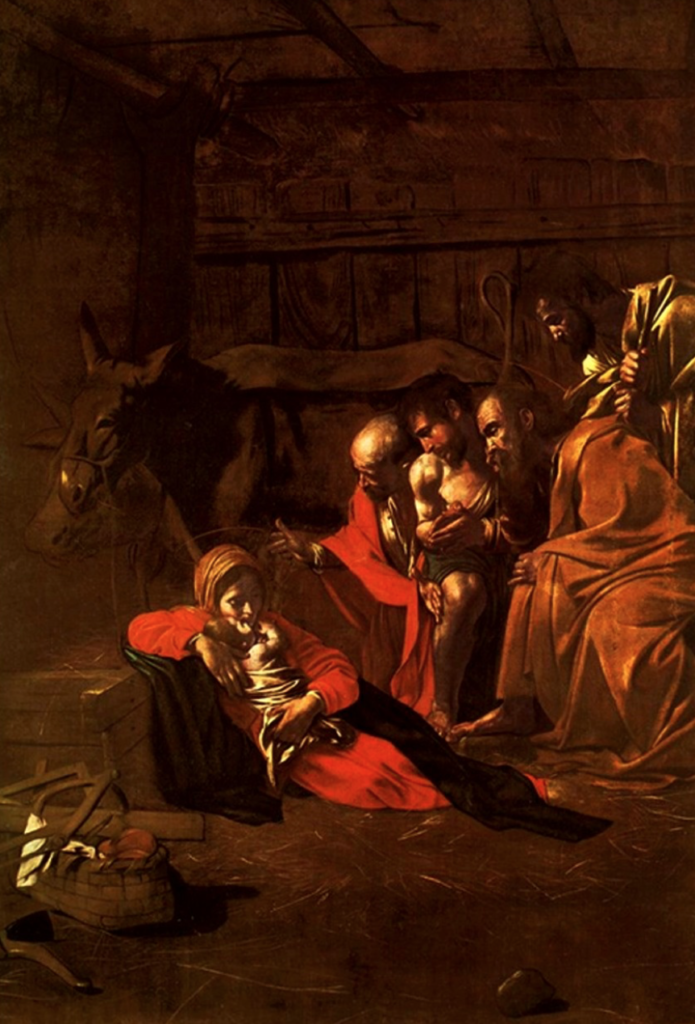Caravaggio left Malta and was on the run for the second time in his life. He found his way to Sicily, most likely in a circuitous route to evade those that were pursuing him.
He finally stopped in Syracuse and spent time with his friend Mario Minniti.
When Caravaggio arrived relationships between religious authorities and the senate had improved and there was a desire to renovate the churches and monasteries of Syracuse. The church Santa Lucia alla Badia wanted a painting of the martyr of St Lucy who was a native of Syracuse and who better to paint it than a renown Italian artist.
It is possible that he started painting soon after arriving in Syracuse. Despite its size, he finished it within a month or so, most likely availing himself of Mario Minniti’s studio.
For The Burial of St. Lucy, Caravaggio painted the moment just after St. Lucy received communion and died. This was a continuation of his desire to paint, even saints, as human beings, and at the same time convey the brutality of Lucy’s martyrdom.
 Another friend made while in Syracuse was Vincenzo Mirabella. Mirabella accounts in his book Dichiarazioni della pianta delle antiche Siracuse, how he took Caravaggio to see one of the oldest sites of Syracuse, the latomìe (quarries). It is told that Caravaggio named the large cave, the Ear of Dionysus. It refers, not to the Greek God, but to the tyrant Dionysius I of Syracuse. According to legend (possibly one created by Caravaggio), Dionysius used the cave as a prison for political dissidents, and by means of the perfect acoustics eavesdropped on the plans and secrets of his captives. Another more gruesome legend claims that Dionysius carved the cave in its shape so that it would amplify the screams of prisoners being tortured in it.
Another friend made while in Syracuse was Vincenzo Mirabella. Mirabella accounts in his book Dichiarazioni della pianta delle antiche Siracuse, how he took Caravaggio to see one of the oldest sites of Syracuse, the latomìe (quarries). It is told that Caravaggio named the large cave, the Ear of Dionysus. It refers, not to the Greek God, but to the tyrant Dionysius I of Syracuse. According to legend (possibly one created by Caravaggio), Dionysius used the cave as a prison for political dissidents, and by means of the perfect acoustics eavesdropped on the plans and secrets of his captives. Another more gruesome legend claims that Dionysius carved the cave in its shape so that it would amplify the screams of prisoners being tortured in it.
Caravaggio most likely felt the pressure of those pursuing him as he departed almost immediately for Messina.
Here he found favor in a town that took a shine to outcasts and painted the last two of his known paintings, The Adoration of the Shepards and the Raising of Lazarus.
Both of these paintings show Caravaggio was one of the greatest painters in European history. His compositions were deeply intimate and emotional. At the same time, his brilliant use of lighting turned his canvases into spaces with the powerful intensity of a lit stage. He often painted characters that were not normally painted and emphasized things that were not normally emphasized. His desire to paint his scenes truthfully and objectively was radical for his time. He tried to paint things as they were and had no qualms about emphasizing the broken, transient, and flawed nature of humanity.
Caravaggio left for Palermo in the Summer of 1609 and died in July 1610.

